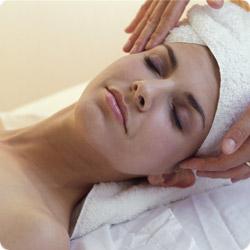So how does massage affect moods? While massage is not a depression cure, it can help decrease depressed feelings. One of the best-known benefits of massage therapy is its ability to enhance feelings of well-being, and studies show promise in the area of depression. When you're depressed, your brain produces less neurotransmitters, such as serotonin, endorphins and dopamine – the feel-good hormones. Although the root causes are not fully understood, a physiological marker of depression is a low level of the neurotransmitter, serotonin. Serotonin is responsible for the transmission of nerve messages and helps to sustain feelings of well-being. Massage releases both serotonin and endorphins. The serotonin acts as a calming mediator for the body while the endorphins act as a happy stimulator for the brain.
As well as increasing production of these feel-good hormones, massage also helps lower the stress hormone, cortisol. Also, therapeutic massage releases tension and promotes relaxation, which leads to an immediate and significant decrease in cortisol, sometimes by more than 40 percent.
Some symptoms of depression are: if you are feeling sad, and this feeling doesn’t go away within a reasonable amount of time, feeling tired all the time, having difficulty concentrating, experiencing feelings of hopelessness, have loss of interest in life and things you used to enjoy, sleeping too much or the inability to sleep at all, overeating or loss of appetite, and feelings of emptiness or irritability.
If you're feeling depressed consider getting a Swedish massage or some form of relaxation massage. The smooth fluid strokes of this type of massage really help calm the mind. For those who have not responded well to prescription antidepressants, there are alternative therapies that have been shown to provide positive results in treating mild to moderate degrees of depression. These therapies include acupuncture, animal-assisted therapy, aromatherapy, expressive therapy and touch or massage therapy.






Serotonin action
The serotonin acts as a calming mediator for the body while the endorphins act as a happy stimulator for the brain.
I just wanted to know if it
I just wanted to know if it would be a good idea to get in massage therapy school before getting into Physical therapy and what would be a better option physical therapy aide or massage therapy just wondering?
Regards